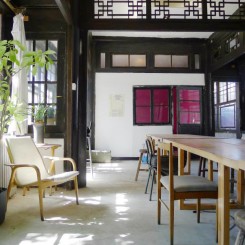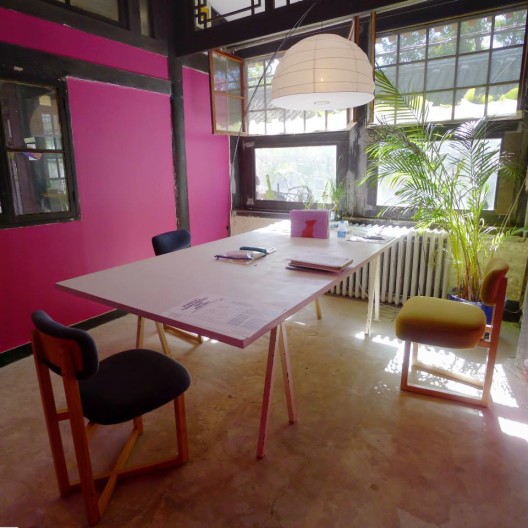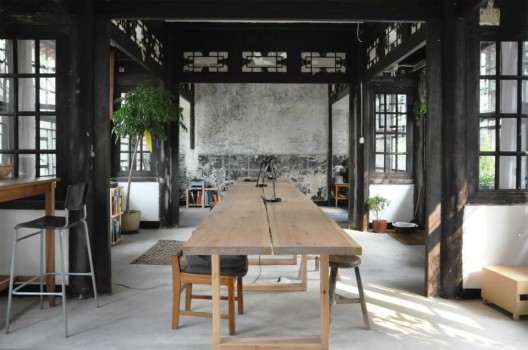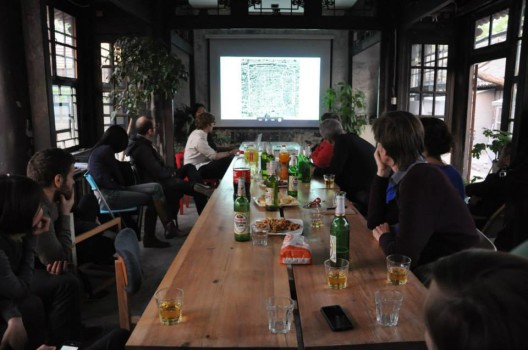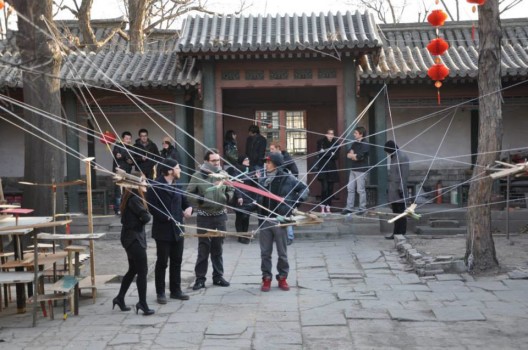China Residencies visited Beijing’s Institute for Provocation (IFP) residency, located in a historic courtyard right in the center of the city’s old hutong alleyways, to speak with the director Max Gerthel and the residency co-ordinator Sid Gulinck about architecture, public space and the importance of experimentation. (Note: The interview took place in September 2014).
China Residencies: How did IFP get started?
Max Gerthel: Institute for Provocation grew out of its predecessor Theatre in Motion, a residency program and culture exchange project focused on alternative performing arts founded by Belgian sinologist and dramaturge Els Silvrants-Barclay in 2005. Els had previously been involved in setting up the first Dashanzi International Arts Festival together with the Chinese artist Huang Rui and Bérénice Angrémy.
After moving back to Belgium in 2009, she teamed up with my wife, architect and editor Shuyu Chen, to adjust the mission of the organization more towards the visual arts and artistic research, with a residency program with Dutch artists as its main activity. At that time the studio and residences were in a big apartment north of Dongzhimen, and as the lease was expiring, we started looking for a new space in the downtown area also to be shared with my architecture practice. After our move to Heizhima Hutong in 2011, I started to get more involved in IFP, curating events and organizing workshops.
CR: Which countries do you work with right now?
MG: We work with the Netherlands since 2009, Sweden since 2013 and now also Denmark. But we also host artists from other countries coming for shorter-term independent residencies.
CR: How many artists do you host at a time?
MG: We have three artists here right now, and have three living spaces available.
CR: What kind of studio or work space is available to residents?
MG: The residents share this large common studio, and can also experiment with performances in the courtyards. For other purposes we collaborate with workshops, universities and production facilities.
CR: What kind of residents are you looking for at IFP?
MG: IFP designed as a place for pre-production and experimentation. We look for artists who think conceptually and spatially—it’s really about exposure to the environment. Being in this part of town, you’re really part of it all, more so than in the arts districts on the outskirts of the city.
CR: How do you support the artists in their research?
MG: We help them connect with places and people whose fields of expertise are relevant to their projects. For example, we helped one of our artists, Esther Kokmeijer, seek out a professor at the China Meteorological Administration. Her project research revolved around weather modification, and she actually ended up taking a professional course about artificial meteorology.
CR: Do you organize exhibitions, open studios or public events here?
MG: We organize talks called IFP sessions that are open to the public. They serve as informal meetings between artists and people in the arts community, and we also sometimes invite architects with alternative practices as well as people who cross disciplines. We’re very interested in public space as a concept, and how public space is interpreted and understood in China and abroad. We also tend to work with artists who focus on spatially related projects.
CR: What are a few of the most successful projects that have happened here over the years?
MG: Edwin Zwakman, a Dutch artist, creates artificial spaces through models which he then photographs—playing with the illusion of reality a model produces when caught on film. He created a model for a sculpture, which was then actually included in a private developer’s property. The piece is called Tree Hugger, and it’s a set of concrete stairs that spiral around a tree trunk, inspired by the ubiquitous gray overpasses that allow pedestrians to cross over Beijing’s many lanes of traffic. He collaborated with Chinese photographer Liu Gang, whose work captures the surreal utopias portrayed in Chinese real estate advertising, in order to document his model and the final iterations of the piece.
Another very successful project is Serge Onnen’s shadow puppets.
Sid Gulinck: Serge really pushed the idea of creating his own world of characters. He held numerous performances, and was incredibly adaptable in his ability to use whatever tools were lying around, and still create something quite exquisite, which is a testament to his expertise and ability. He would just see things in the streets that no one else would notice, and brought his imaginative approach to this place.
CR: How long do residents usually stay for?
MG: Those projects wouldn’t have been possible if the artists weren’t able to stay for long periods of time. Six months is ideal, because you need a month to get your bearings, to find your way, and in a way, find yourself. Then you need time to experiment, to try, to fail, to try again—and that takes about four months, which leaves a month to wrap things up. Time limits what’s possible, and ideally, we’d like the artist to stay as long as they can, but anything beyond six months is impractical for all parties.
CR: Do the residents have a chance to exhibit their work?
MG: Some artists organized shows through personal connections, like Roderick Hietbrink, who had a show at Where Where Art Space. But just a few months ago, we opened our own space, which we call Black Sesame [IFP is located on Heizhima Hutong, which means Black Sesame Alley in Chinese] We share the space with our neighbor Adel Andalibi, a visual anthropologist, and Serge Onnen had the first show here, exhibiting the puppets he made, a zoetrope, and projections of his short film Cloacinae.

